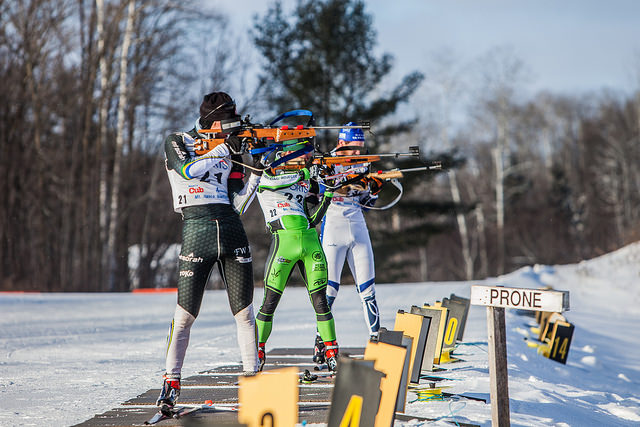
After the 2014 Olympics, the U.S. Biathlon Association (USBA) decided to sink some of its budget back into the development pipeline, which had taken a hit to bolster high performance in the run-up to the Games.
The juiced-up development program had multiple tenets, but one was a return to a strategy that had worked once before: recruiting high-level senior skiers, and turning them into biathletes.
Last summer, USBA hosted its first Talent ID Camp, including 11 ski racers from Stratton Mountain School in Vermont to Alaska Pacific University and everywhere in between. Some ended up focusing on biathlon in the subsequent season; others didn’t.
Only two of the recruits snagged repeat nominations to the U.S. National Team this spring. Max Durtschi, a former professional cyclist from Sun Valley, Idaho, got nominated a second time to the “X” team, a residential development program based at the Olympic Training Center in Lake Placid which allows full access to USBA coaches and resources. And Patrick Johnson of the Auburn Ski Club in California was promoted from the National Development Group, which offered only periodic exposure to national team coaches, to the “X” Team.
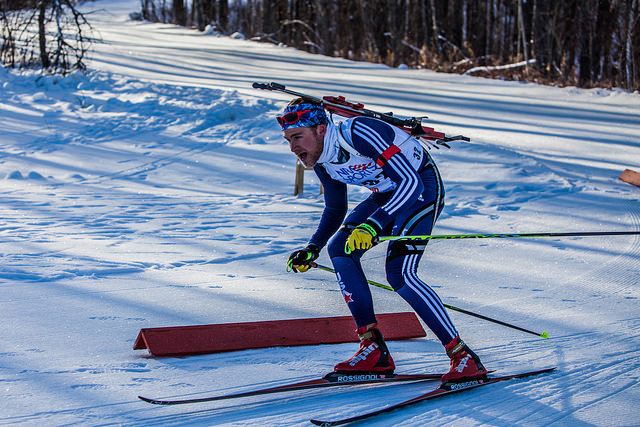
Both men spent considerable time on the NorAm circuit last season and represented the United States at IBU Cup competitions in Canmore, Alberta – the level just below the World Cup, where 18 different countries sent teams.
“I think it was for both of them really overwhelming I guess,” USBA Chief of Sport Bernd Eisenbichler said of the Canmore experience, where Durtschi finished last in one of the races. “But the goal from our side was to give them as many racing opportunities as possible… They need these experiences internationally too, to see where the level is and I think it will make them work really hard.”
And Durtschi may have had it hard at the IBU Cup, but he bounced back, placing third in the sprint and second in the pursuit at U.S. National Championships; Johnson won both races.
Several years ago, USBA ran a larger program to recruit college skiing talent to biathlon. That yielded Olympians Sara Studebaker and Susan Dunklee, as well as several others who got IBU Cup experience. More recently, Craftsbury Green Racing Project cross-country skier Clare Egan shifted her focus to biathlon. Last season, her second with any degree of biathlon focus, she moved from the IBU Cup to the World Cup to a top-40 finish at World Championships and was recently named to the “A” team.
So it’s clear that, with the right skier, the strategy can be a success.
“That she would make the World Cup team, that was kind of forseen as we don’t have so many women right now in the United States fighting for these spots,” Eisenbichler said of Egan. “But for the ‘A’ team you have to have a remarkable result. It’s not that we just fill up the team by numbers… she made this 40th place at World Champs, and that’s a remarkable result for your first year on the World Cup.”
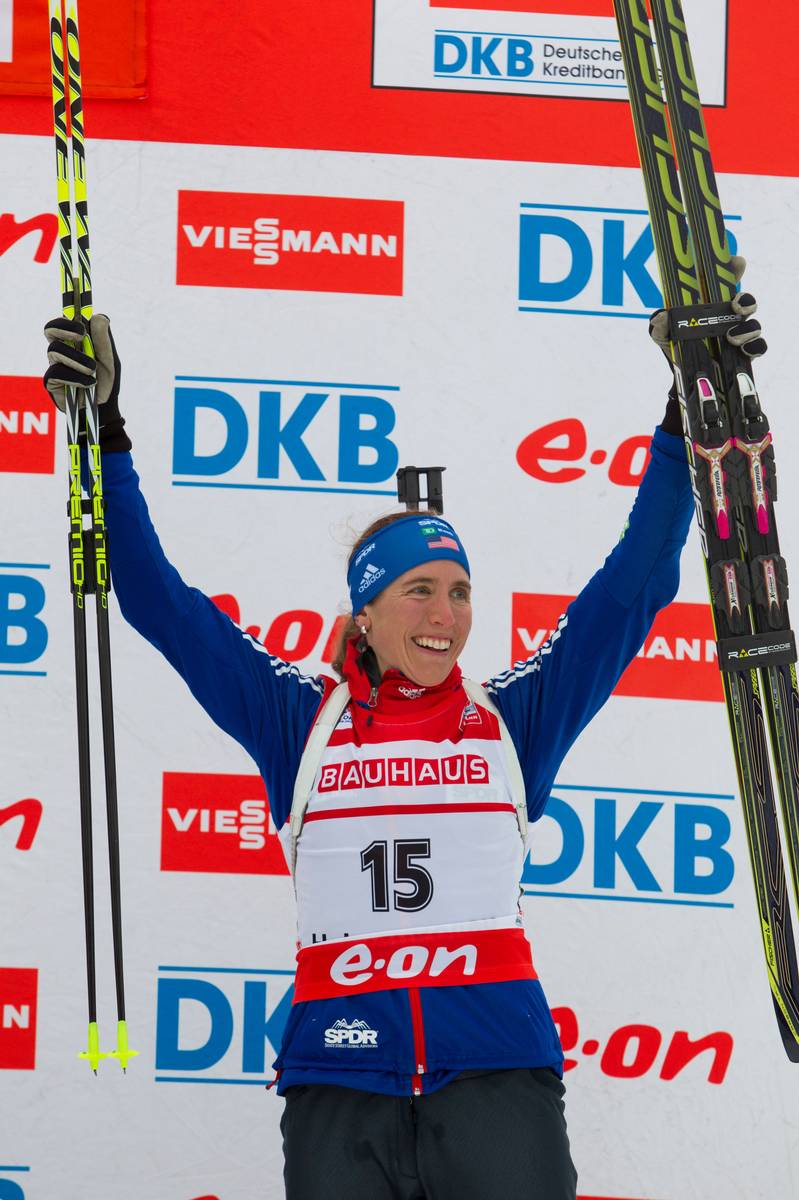
Johnson has said before that his goal is to compete in biathlon at the 2018 Olympic Games. A winning collegiate skier for Middlebury College and a World Junior Championships competitor for the U.S., Johnson picked up shooting quickly, according to Auburn Ski Club coach Glenn Jobe, himself an Olympic biathlete from the 1980 Games. Johnson’s season culminated in two national championship titles, including clean shooting in the sprint.
“It is extremely unusual to see the type of success Patrick had in his first year of biathlon, however with his work ethic and motivation to improve it did not surprise me,” Jobe wrote in an email. “He’s got the ‘right head’ for biathlon and approaches the sport with a calm and steady demeanor. It takes someone who mentally can turn it ‘on/off’ or ‘switch gears quickly’, to succeed in this sport.”
Jobe noted that Johnson had to deal with some changes to his rifle throughout the last year, but finally got comfortable with a good configuration. USBA Head Development Coach Jean Paquet watched those changes in real time, and took note.
“We worked together in October at a camp in Salt Lake,” Paquet wrote in an email. “At the time it seemed to be difficult for him to get the right [shooting] position and get the shots in the target. The following first snow camp in Canmore I did notice a nice improvement in his shooting ability, as he was able to do 5 for 5. I was impressed as he was able to do some clean shooting bouts and a perfect score at the National sprint in Truckee.”
The timing of having some breaks to go back to the drawing board in between bouts with the national team coaches proved to be a good strategy, said Johnson, who made making the “X” team one of his season goals.
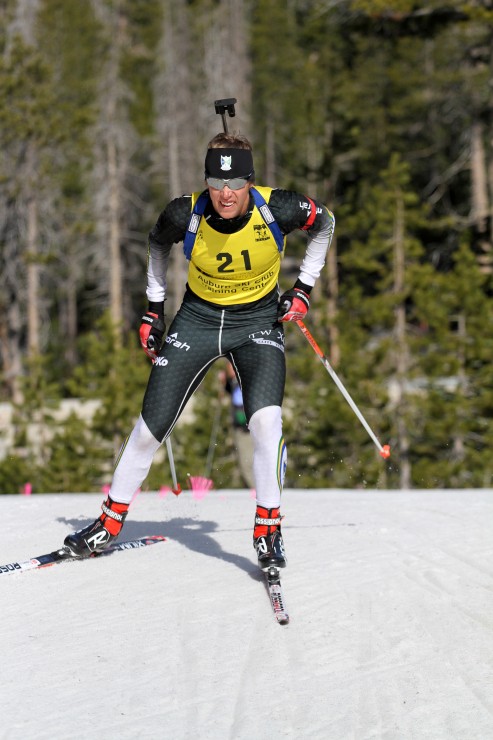
He worked hard to get to as many races as possible, which can be challenging given the miniscule domestic biathlon scene in the U.S. He also won a NorAm mass start in Lake Placid by over a minute over “B” team member Casey Smith, and another biathlon race in Soldier Hollow, Utah.
“I got 16 biathlon races in last year, which I think was a good number for my first year in the sport,” Johnson wrote in an email. “My racing last season came mostly in two blocks, one at the beginning of the year at the Canmore NorAms and IBU Cup Trials and one at the end of the season at the Canmore IBU Cups and at US Nationals. This actually worked out really well since it gave me a period in the middle of the season where I could spend some time back in Truckee training and incorporating what I learned from my first racing experiences with the sport.”
As part of the “X” team from the beginning, Durtschi spent more time in Lake Placid working closely with Paquet. Durtschi had skied at a high level as a junior, but then turned his attention to professional cycling. As such, he had to not only master shooting but also hone his ski technique to a greater extent than Johnson.
“Max coming from a cycling background, we have been working on biathlon training periodization,” Paquet explained. “Mainly learning how to shoot and combining the two. It is a process that usually takes two years before the athlete begins to be in control and start being more consistent. Max is a hard worker and learns pretty quickly, but he has to go through a full year of training in order to get the stability and the technique needed to ski fast.”
But if he had a lot to learn, Durtschi, who moved to Lake Placid in November, says that he was given the full resources needed to do so.
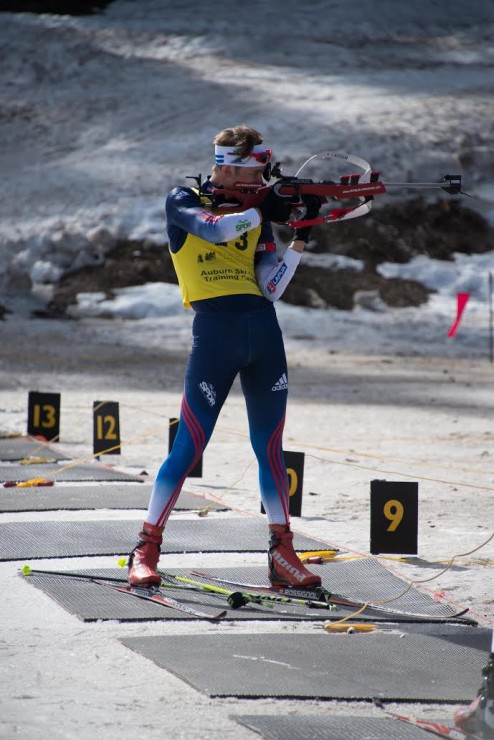
“I have been provided everything an athlete could ever ask for: remarkable coaches, outstanding facilities, and motivating teammates,” he wrote in an email. “I did have a chance to train with my teammates throughout the fall and winter, which was great. I learned a lot from them, and they were very generous with their knowledge of the sport… [and] this past fall Jean would often take his off-day and work with me; that really motivated me to train even harder.”
Another motivation? Durtschi was given the rifle that formerly belonged to Willie Neal, a biathlete who died after being hit by a car while rollerskiing in northern Maine. Durtschi now represents the Willie Neal Environmental Awareness Fund, and said that holding the rifle day in and day out “means the world to me.” Biathlon rifles are typically an investment that costs thousands of dollars, and can be a setback to athletes looking to join the sport.
Both Paquet and Eisenbichler noted that Durtschi had the highest testing numbers at the Talent ID Camp last summer, which meant that he was their top recruit. Although Johnson seemed to be making faster progress, Eisenbichler had little doubt that Durtschi was also on the right track.
“For us it’s clear that an ‘X’ Team nomination is not meant for three months and then you take it away again,” Eisenbichler said. “It needs a period of time like 16 or 17 months where you have a really good chance to learn biathlon. Max is one example for sure – we have to see some indicators for a complex biathlon performance where we say, okay, it was worth the investment. Max has a super physical capacity.”
So what comes next? It’s clear to both athletes and coaches that much hard work remains to be done for them to be World Cup ready.
“It will be interesting for Patrick and Max to do a full training season starting in May to see how can they improve,” Paquet wrote.
After the IBU Cup experience, Johnson has some tangible goals for what to improve on.
“A goal for next year is definitely to have some success on the IBU Cup, and to do that I’ll need to keep improving my skiing and shooting,” Johnson wrote. “I still have the biggest gains to be made in shooting, and the progress I made in this first year is definitely motivation to keep working hard at it. I think the effort I put into picking up shooting conflicted with my ski training at times over the past year, and though I was still skiing well, I don’t think my speed was quite at the level it had been in my most recent seasons. But I still had a few promising ski times on the IBU Cup, so with the increased support I’ll be getting from USBA and the training base I already have, I’ll be looking to take a big step up in ski speed this next year.”
Eisenbichler is also hoping to partner more closely with regional clubs to provide better development opportunities for athletes already in the sport.
“We also have to go out to the clubs and be present there as much as we can with the small staff that we have,” Eisenbichler said. “That’s what we will try to do this year,to come up with a concerted camp schedule for all different regions and to do some testing there to also find the young talents early. I also had the idea to have a USBA development summit in Lake Placid in September, and invite the best talents that we find from each region in these regional development camps.”
In that sense, Johnson’s example seemed to perfectly marry the different strands of development opportunity. And for Jobe, whose ASC Biathlon Training Center is in just its third year of existence, seeing Johnson leave for Lake Placid will be sad, but also an affirmation and advertisement of his mission.
“We are definitely sorry to see Patrick move to Lake Placid, however I feel that we’re doing our job well when we’ve provided any athlete that’s come through any of the ASC ski programs with the skills and opportunity to move on to the next level,” he wrote. “We are primarily a grass roots biathlon program, supported by volunteers and donations, so all of us are super excited to see the success Patrick is having.”
Chelsea Little
Chelsea Little is FasterSkier's Editor-At-Large. A former racer at Ford Sayre, Dartmouth College and the Craftsbury Green Racing Project, she is a PhD candidate in aquatic ecology in the @Altermatt_lab at Eawag, the Swiss Federal Institute of Aquatic Science and Technology in Zurich, Switzerland. You can follow her on twitter @ChelskiLittle.



